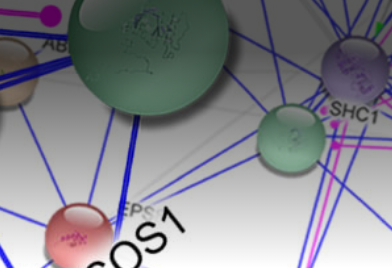
Mass spectrometry can be used to quantify proteins present within a sample. This is particularly useful for determining which proteins are differentially expressed in response to a stimulus, for example, addition of a drug/changing environmental conditions. Computational software can then be utilised to determine which pathways are altered in response to the specific stimulus.
There are different quantitative proteomics methods each with its own advantages. Please feel free to contact us for advice on which is most appropriate for your system.
For quantitation, we offer:
- SILAC – Stable isotope labelling by amino acids in cell culture. Cells to be compared are grown in different media containing normal (termed light) and isotopically labelled (termed heavy) amino acids. Incorporation of these heavy amino acids into proteins causes a mass shift of the protein which can be detected by mass spectrometry. If both samples are combined, the ratio of light to heavy proteins detected reflects the protein abundance.
- TMT – Tandem Mass Tags. TMTs are chemical labels that typically react to amines on proteins. Up to 11 different TMTs can be used enabling up to 11 different experimental conditions to be labelled differently. Since the TMTs only vary in their isotopic configurations, the samples can be combined prior to analysis enabling all samples to be compared in a single mass spectrometry run.
- Label-free quantitation. No labelling/sample pre-treatment is required for analysis. Proteins are quantified at the peptide (MS1) level. Since the samples cannot be differentiated by labelling, each biological sample needs to be measured separately.
For quantitative proteomics, we utilise the Q-Exactive HF Mass Spectrometer which is coupled to a nanoflow liquid chromatography system (Dionex). Our data is typically processed using Proteome Discoverer v. 2.2.
Note: for quantitative phosphoproteomics, please also refer to our Post-translational modification analysis page.
How to prepare samples for analysis
For quantitative proteomics, sample preparation is typically performed by the customer and the digested proteins submitted directly for LC-MS/MS analysis. Please refer to background information section in Protein/Peptide Identification for an idea of what this involves. Sample preparation that is tailored to your specific needs can be provided upon request. Please contact us to discuss your needs prior to sample submission.
For LC-MS/MS analysis, we require a minimum of 5 µg per sample. The protein concentration must be measured accurately prior to digestion. Note: a desalting step must be performed prior to analysis. For quantitative analysis we highly recommend using a 2-4 hour LC gradient to maximise the number of proteins detected. The longer the gradient, the more proteins you will be able to quantify.
Prior to starting your experiment, please take into consideration the number of replicates needed and think about the information you ideally want to obtain from your sample. Using additional fractionation procedures such as high pH fractionation or cation exchange chromatography, and enrichment techniques such as phosphoenrichment can dramatically increase your data output. These services can be provided upon request.
Note: PEG, glycerol and detergent are not amenable to mass spectrometry analysis. These must be removed prior to sample submission.
Sample Submission
To download the sample submission form click here.
Note: sample submission signifies agreement with our terms and Conditions of Service.